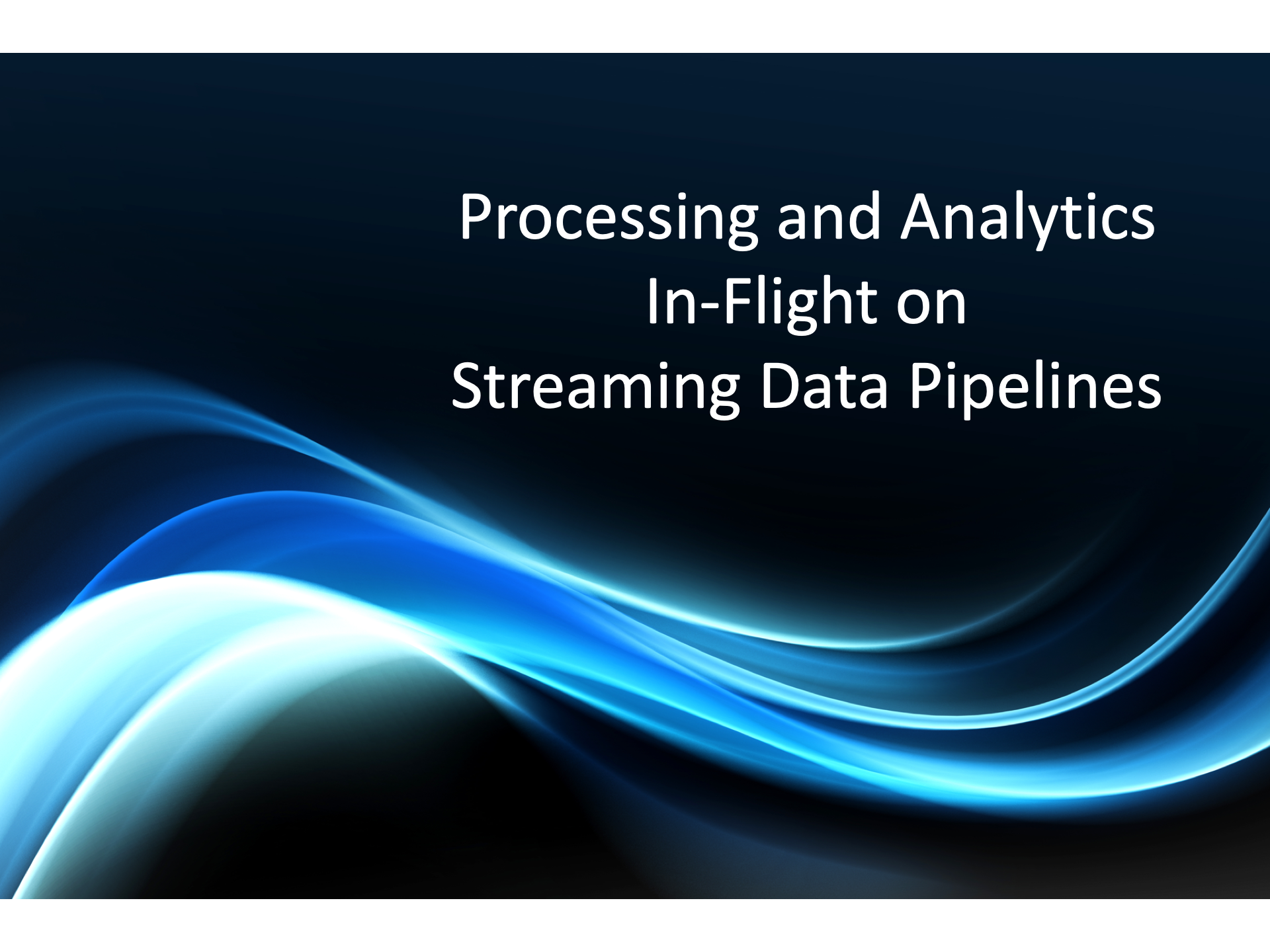With the validation of usage scenarios and the promotion of those applications to the “production floor” with enterprise-grade streaming integration facilities, organizations are nearly always drawn to using analytics in-flight on their streaming data pipelines. However, these analytics are not typical retroactive charts and graphs. More often than not, these analytical scenarios are about the data and how it is behaving within the streaming landscape.
For example, analytics on a streaming data pipeline usually start with examining the data within the pipeline. While all streaming integration facilities start with the ideal path in mind for the performance and content of the data, the real-time nature of business events often requires organizations to continually monitor for exceptions in the data pipeline. Occasional missing values in the event stream are dealt with by the error-handling capabilities of an enterprise-grade platform. However, fundamental changes to the values of events (new data, different data types, etc.) or the quality of the data (corrupted, missing data) need to be monitored and accounted for by support teams in the short-term, or data architects and data engineering teams in the long-term.
Another use for analytics is understanding the operational aspects of the data stream. How many events are flowing from the sources? How many reach the targets? How do these match up against the historical or projected norms for the environment? In each of these cases, it important to understand these operational-visibility key performance indicators to properly manage any streaming environment. Data engineers cannot wait for a static report or dashboard to provide the real-time insights to properly manage a streaming environment.
Finally, as organizations implement streaming analytical applications based on their business events, they will need to perform analytics in-flight and augment the data with that information. As usage scenarios like fraud management in real-time ordering become more prevalent, it is important for organizations to be able to provide analytical results that match the speed of those use cases. This enables not only the competitive advantage aspects of these use cases, but it allows the risks associated with these leading-edge real-time usage scenarios to be mitigated as well.
To learn more about the benefits of performing processing and analytics in-flight, visit our Striim Platform Overview product page, schedule a demo with a Striim technologist, or download a free trial of the Striim platform and demo it yourself.





















